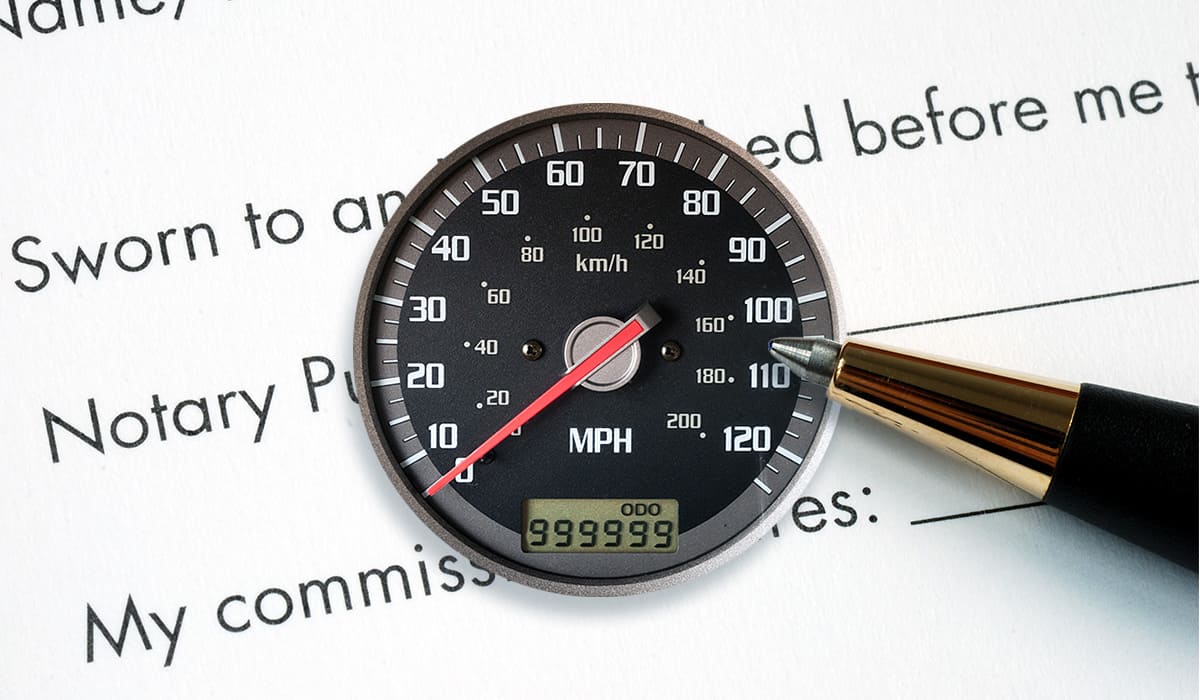Where Can I Find A Notarized Odometer Statement?
These days many buyers of second-hand vehicles report misinformation about the vehicle’s mileage after purchasing it. While the notarized odometer statements are readily available for many newer vehicles, where can you find the statements for older vehicles?
A notarized odometer statement is usually available online and protects car buyers from mileage fraud. According to federal law in all 50 states, a seller must fill this form with accurate information to give the buyer complete vehicle ownership.
Want to learn more? If so, let’s look at what a notarized odometer statement is in detail, why it’s required, and how to use it properly.
Where Can I Find a Notarized Odometer Statement?

When buying and selling second-hand vehicles, mileage fraud is quite common. This is why many buyers demand a notarized odometer statement from the seller as proof of the vehicle’s mileage, to be on the safer side when buying a used vehicle.
If you’re buying a vehicle, request this statement from the buyer because it’ll give evidence that your vehicle has the mileage stated on the selling sheet.
Nowadays, you can’t buy a vehicle without getting the seller’s signature on this document.
If you’re selling a car or giving ownership to someone, whether a family member or even a friend, the notarized odometer statement will seal the deal between both parties while ensuring transparency of the agreement.
So, where can you find this vital document?
Fortunately, you don’t have to wait in long queues to get this piece of paper, and most are available online. However, even older vehicles should be updated regularly, and car owners must provide their vehicle information so it can be added to an online database.
Filling a notarized odometer statement is simple and doesn’t require complex information. However, it will be checked by the relevant authorities.
Is a Notarized Odometer Statement Required in Every State?
Most second-hand vehicles in the United States require a notarized odometer statement when sold to another person. In addition, any buyer purchasing a four-wheeled vehicle that weighs below 16,000 pounds or buying a motorcycle under ten years of use requires a notarized odometer statement from the seller.
Federal law requires a notarized odometer statement in every state of America when buying and selling second-hand vehicles.
In all 50 states, the buyer needs to get this document from the seller so the vehicle buyer can apply for other essential registration documents, such as a bill of sale, etc.
Without a notarized odometer statement, the sale of the vehicle can’t be finalized, the seller can’t give away the ownership of the vehicle, and the buyer can’t rightfully purchase it. And each state has its own notarized odometer statement.
So, if you’re a seller in Alabama, you must get a notarized odometer statement that is state-specific and provided by the Department of Motor Vehicles (DMV) for Alabama. You can’t legally complete the sale of a vehicle in Alabama with an odometer disclosure statement specific to Georgia.
If you’re downloading the document from the internet, make sure it’s specific to your state. A notarized odometer statement is required for the sale and purchase of passenger vehicles, motor homes, towing trucks, pick-up trucks that don’t exceed the weight limitation, and even meteor bikes that haven’t exceeded a decade of usage.
What is a Notarized Odometer Statement Used for?

A notarized odometer statement is used to declare the correct odometer mileage of a used vehicle to the buyer. A seller must fill up all the columns of this document with accurate information so that the buyer isn’t misinformed about the vehicle’s mileage.
If the seller fills the form with incorrect information about the odometer mileage, it’ll be considered fraud under federal law that applies to all 50 states. This can result in a heavy fine that the seller must pay, or it can result in further penalties or even prison time.
So, a notarized odometer statement indicates the odometer reading of the vehicle’s mileage. Though the form seems generic, you shouldn’t mistake it as something unimportant, especially if you’re the seller.
This document protects the buyer from fraud or misinformation about the second-hand vehicle.
Used vehicles sometimes have a faulty odometer that gives an incorrect mileage reading. In such situations, you need to write the visible odometer reading and check a box or write in a column saying, “This reading may be incorrect due to a faulty odometer.”
In this way, you can indicate that you didn’t deliberately try to cheat the buyer and inform them about the incorrect reading beforehand.
